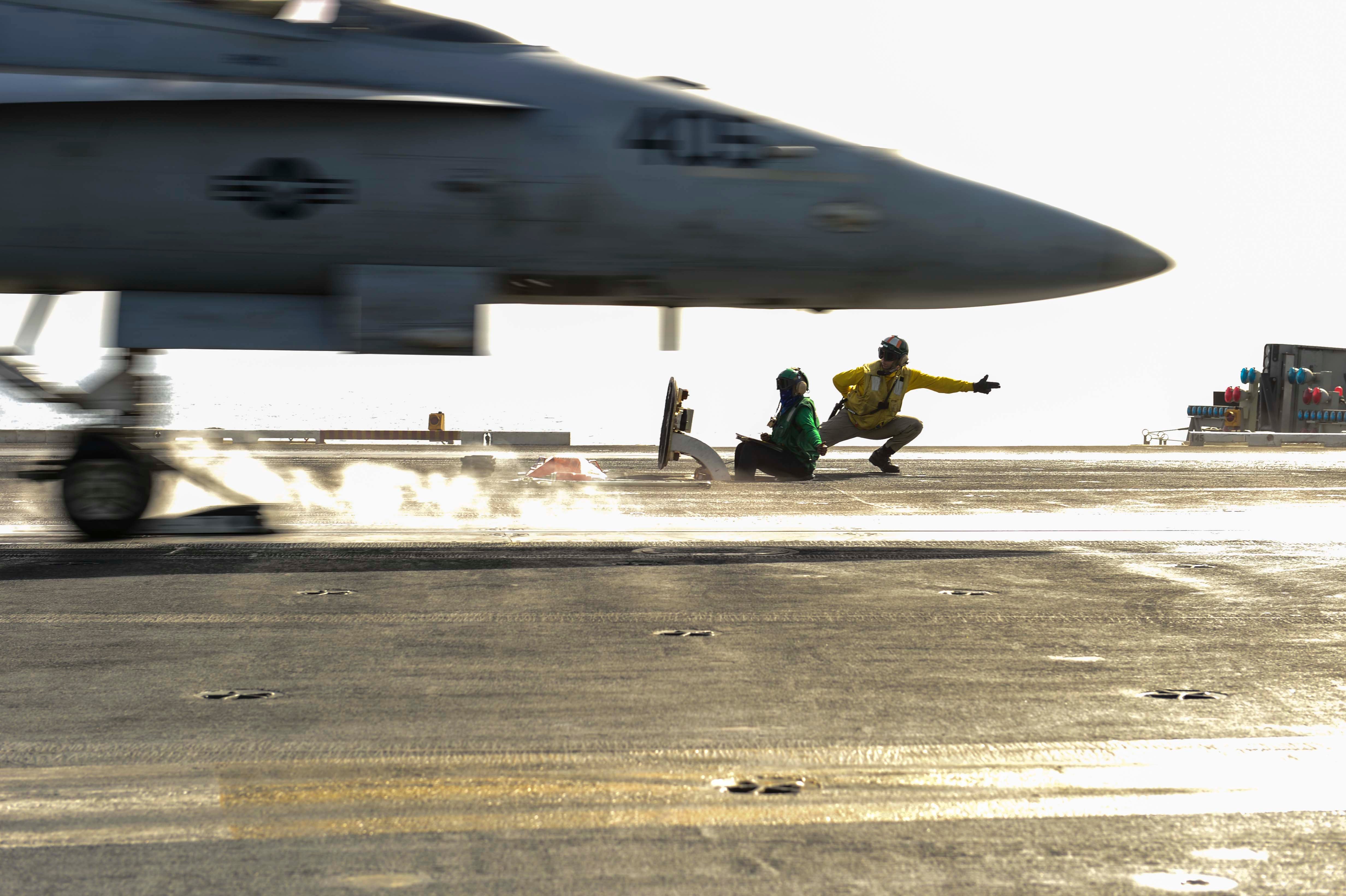A 2016 F/A-18C Hornet crash was the result of errors made by a below-average, inexperienced pilot, and runway lighting issues, a Marine Corps investigation has concluded.
On Oct. 25, 2016, an F/A-18C with Marine Fighter Attack Squadron 251 crashed on the runway at Marine Corps Air Ground Combat Center Twentynine Palms, California, causing the pilot to eject. The pilot survived and was treated at the Robert E. Bush Naval Hospital on base.
“Two primary factors led to unrecognized loss of [situational awareness]: 1) the approach and airfield lighting not being turned on at sunset; 2) and his relatively low proficiency and flight experience,” the investigation reads.
Proper training and familiarization with takeoff, landing and the surrounding terrain could have mitigated the issue altogether, the investigation found.
The completed investigation was obtained by Marine Corps Times through a Freedom of Information Act request.
The pilot was returning from an urban close-air support exercise and was attempting to land his aircraft at sunset. The pilot mistook a dirt section of the runway and a parallel taxiway, and was confused by flashing lights from a section of H-1 helicopters, and lost control of the aircraft as it touched down.
Before the aircraft’s landing approach the flight lead, also piloting an F/A 18, had radioed the tower to have the runway lights turned on.
Investigators found issues stemming from management of the runway lights.
High use of rotary wing aircraft and nighttime operations resulted in an unwritten standard operating procedure: Lights at the runway were considered “user requested.” This allowed aircraft conducting nighttime flying with the aid of night vision devices to not be impacted by the runway lights.
However, Federal Aviation Administration and military orders require runway lights to be turned on at sunset, and operation of the lights must be controlled by the Air Traffic Control tower. The ATC is not authorized to delegate its authority, the investigation concluded.
Moreover, actual physical control of the lights was not located at the ATC tower, which resulted in a sometimes 10-minute delay in operating lights.
The pilot in question had consistently had below average scores in training, had relatively low flight hours compared to his peers, and had several unsatisfactory events while at VMFAT-101 — a squadron for training F/A-18 pilots out at Miramar Air Station in California.
The “below-average training progression coupled with his relatively low F/A-18 flight experience, which has been exacerbated by limited flight time caused by low aircraft availability rates” contributed to the risk of an incident, the investigation reads.
From January to September 2016, the pilot of the crashed Hornet only averaged 7.1 flight hours a month, while the entire squadron averaged 9.4 hours.
Just before the training, the pilot missed multiple simulation exercises ― some that focused on take-off and landing at the airfield ― because he was on leave for two weeks.
RELATED

From August until mid-October, he participated in nine close-air support simulations, mostly focused on the execution of the upcoming training mission, but not landings or take-off.
He had four unsatisfactory events while at VMFAT-101 and his performance was rated “slightly below average.”
In 2014, the pilot completed Advanced Jet Flight Training with a below average Naval Standard Score.
In mid-September, about a month before the crash, the pilot received a grade sheet of “retry” for a second attempt at night flying event. And later that month, he received the same grade in a general purpose simulator for close-air support.
After a comprehensive review, it was determined the mishap pilot should be placed on conditional flight status, Capt. John Roberts, a spokesman for the 2nd Marine Air Wing, said in a news release.
The investigation also recommended that the operation of the runway lights at the airfield in Twentynine Palms be located at the ATC tower.
Shawn Snow is the senior reporter for Marine Corps Times and a Marine Corps veteran.





